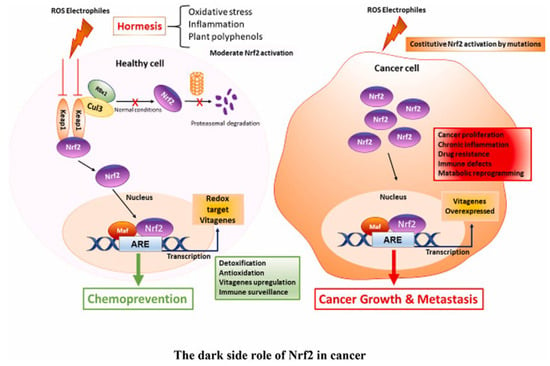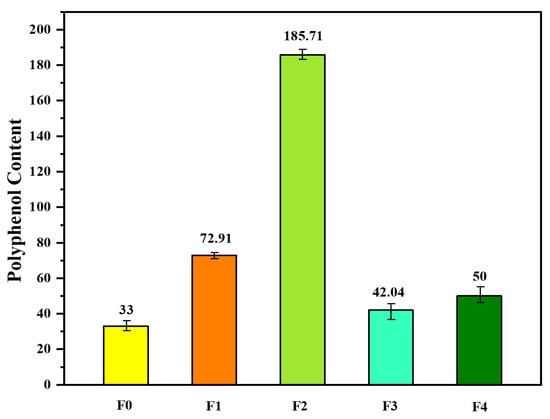Your browser does not fully support modern features. Please upgrade for a smoother experience.
Please note this is an old version of this entry, which may differ significantly from the current revision.
Subjects:
Chemistry, Medicinal
Rosmarinus officinalis L. compounds, especially its main polyphenolic compounds, carnosic acid (CA) and rosmarinic acid (RA), influence various facets of cancer biology, making them valuable assets in the ongoing fight against cancer. These two secondary metabolites exhibit formidable antioxidant properties that are a pivotal contributor against the development of cancer.
- carnosic acid
- cell signaling
- rosmarinic acid
- Rosmarinus officinalis L.
1. Introduction
Aromatic plants have emerged as promising contenders in the realm of cancer treatment. They offer bioactive compounds with potent medicinal properties that can stop tumors from growing and induce cancer cell death. Notable studies have revealed that these secondary metabolites exhibit formidable antioxidant properties which are a pivotal contributor against the development of cancer [1]. Additionally, compounds derived from this natural resource have demonstrated their ability to thwart the activity of cancer stem cells, which are pivotal actors in tumor progression and metastasis. This compelling body of evidence underscores the significant promise held by aromatic plants as a wellspring of natural compounds for advancing cancer treatment [2].
In the vast realm of bioactive compounds, polyphenols are a prominent class of secondary plant metabolites that demand attention due to their multifaceted bioactive properties [3]. Despite their structural diversity, polyphenols play pivotal roles in various biological processes within plants, substantially contribute to the sensory and nutritional attributes of plant-based foods, and have potential applications in a wide array of practical contexts (formulation of traditional medicine, pharmaceutical industry, food processing and preservation) [4,5].
Rosemary, scientifically known as Rosmarinus officinalis L., as a cornerstone in both economic and social realms, plays a vital role in the countries where it thrives. Its significance is multifaceted, contributing substantially to local economies and societal practices [3]. With an estimated annual production ranging from 150 to 200 tons, rosemary has emerged as a key player in agriculture and industry. Notably, Tunisia leads production with 80 tons, followed by Morocco with 40 tons, Spain with 28 tons, and France contributing 5 to 10 tons of rosemary oil [4,6]. The cultivation of rosemary not only supports farmers but also fuels the agribusiness sector, providing employment opportunities in rural areas [7]. The extraction of its essential oil, widely utilized in the fragrance and flavoring industries, contributes to international trade, fostering economic growth and generating export revenue. Beyond its economic impact, rosemary is deeply interwoven into the social fabric of cultures [8]. Its aromatic and flavorful properties make it a staple in culinary traditions, enhancing the taste of diverse dishes and contributing to a sense of cultural identity. Additionally, rosemary holds a rich history in traditional medicine, where its potential health benefits, including hepatoprotective, antifungal, insecticidal, antioxidant and antibacterial effects [9], contribute to traditional healing practices. The cultural significance of rosemary extends to rituals, ceremonies, and festivals, adding to the cultural richness of communities [10]. Apart from the wide spread’s use of its essential oils in various applications, numerous scientific studies have explored the possible benefits of rosemary polyphenols [8] and their individual components, particularly those with antioxidant effects, for treating inflammation, liver damage, and cancer. Nowadays, in the European Union, rosemary extracts are added to food products and beverages at levels of up to 400 mg/kg, assigning them the label E392 [11].
2. Potential Antioxidant and Anticancer Effects of Res
2.1. Polyphenols: Diverse Roles in Plants and Humans
Polyphenols are secondary metabolites that are widely found in different plants and play a pivotal role in both plant biology and human health [12]. These compounds exhibit a wide range of structural diversity and encompasses phenolic acids, phenolic alcohols, and other molecules with multiple hydroxyl groups on aromatic rings [13]. In our diet, polyphenols are commonly found in foods like fruits, vegetables, cereals, legumes, tea, coffee, and chocolate [14]. However, the quantity and quality of polyphenols in these foods depend on factors such as plant genetics, growing conditions, soil composition, harvest maturity, and post-harvest handling [15]. Polyphenols have antioxidant effects and can scavenge free radicals due to their chemical structure. However, the antioxidant activity depends on some parameters such as the type of compound, the level of methoxylation, and the number of hydroxyl groups [16]. Indeed, this property is responsible for the protection against several diseases (cancer, Alzheimer’s disease, cardiovascular disorders) Richheimer et al. [17]. Recent research by Birtić et al. [18] sheds light on the potential of natural products, including polyphenols, to interact with microtubule affinity regulatory kinase (MARK 4) and promising candidate for cancer treatment. Interestingly, polyphenolic antioxidants can exhibit a dual role as prooxidants. This can trigger apoptosis in cancer cells and damage biological macromolecules, mainly in systems that contain redox-active metals such as copper [19] (Figure 1).

Figure 1. Mechanism of chemopreventive action of plant polyphenols.
In line with the exploration of polyphenols, Fadili et al. [21] conducted a comprehensive analysis to quantify the polyphenol content in two distinct species of rosemary. Their investigation unveiled the presence of a rich array of secondary metabolites within both plant species, with a particular focus on the abundance of polyphenols. These polyphenols exhibited variable concentrations, ranging from 0.02 to 0.185 g, signifying the remarkable diversity in secondary metabolite content. Furthermore, the researchers endeavored to assess the antioxidant potential of these compounds using the DPPH method. The results were short and impressive, particularly for the ethyl acetate fractions, which displayed robust DPPH radical-scavenging abilities. In fact, the inhibitory concentrations responsible for 50% of the antiradical activity (IC50) were measured at an astonishing 103.86 ± 3.5 μg/mL for Rosmarinus officinalis L. To determine the precise polyphenol content within the plant extracts, UV/visible spectrophotometry was employed. The outcomes of this meticulous analysis are visually presented in Figure 2, showcasing the rich polyphenolic landscape of these rosemary species.

Figure 2. Polyphenol content expressed as gallic acid equivalents (mg GAE) per gram of Rosmarinus officinalis L. (F0 = methanol/water (80/20) extract; F1–3 are obtained from F0 by extraction using successively chloroform (F1), ethyl acetate (F2), and n-butanol (F1); F4 is the remaining final aqueous phase).
2.2. Phenolic Powerhouses in Rosemary: Carnosic and Rosmarinic Acids
A great number of compounds were identified in a solid liquid extract from rosemary, using, most often, HPLC–MS and GC-MS as methods of analysis. These secondary metabolites belong mainly to the classes of phenolic diterpenes (carnosic acid, carnosol, rosmadial, rosmanol), phenolic acids (rosmarinic acid, caffeic acid), flavonoids (genkwanin, homoplantaginin, scutellarein and cirsimaritin), and triterpenes (ursolic acid, oleanolic acid) (Figure 3) [22]. Their levels vary significantly based on the parts of the plant (leaves, stems, sepals, petals, seeds, roots), seasonal variation, and the extraction method [23].

Figure 3. Chemical structures of varied bioactive compounds of rosemary.
The principal bioactive components of the rosemary extracts are carnosic acid (CA), rosmarinic acid (RA), and carnosol (CAR) [5]. CA and RA, prominent phenolic compounds in rosemary leaves, boast unique attributes that contribute to their significant roles in health and well-being. CA, characterized by its abietane-like structure fused with a catechol group and O-phenolic hydroxyl groups at positions C11 and C12 [24], distinguishes itself by accumulating preferentially in rosemary’s glandular trichomes. Its lipophilic nature empowers CA to excel the antioxidant activity, effectively countering singlet oxygen, hydroxyl radicals, and lipid peroxyl radicals. Beyond its antioxidative prowess, CA exhibits a diverse repertoire of benefits, including anti-inflammatory, antiproliferative, antitumorigenic, and neuroprotective properties [25]. Recent research underscores CA’s substantial contribution, along with its primary oxidation product, carnosol (CAR), comprising around 90% of rosemary extract’s antioxidant capabilities [26]. This remarkable antioxidant response owes much to CA’s abundant presence relative to other phenolic compounds. Intriguingly, CA’s superior protection against lipid peroxidation, as evidenced in accelerated aging experiments, surpasses that of α-tocopherol, while its rapid consumption leads to the absence of accumulated conjugated hydroperoxides of polyunsaturated fatty acids [27].
Rosemarinic acid (RA) has a chemical structure termed 3,4-dihydroxyphenyllactic acid and displays versatility through a spectrum of health-enhancing qualities. Widely distributed across plant families, including Boraginaceae and Lamiaceae [28], RA shines with its antiviral, antibacterial, anti-inflammatory, and antioxidant effects [29]. What is intriguing is RA’s potential for synthesis in undifferentiated plant cell cultures, often yielding higher levels than the original plant source. Its documented ability to alleviate inflammation by reducing Cyclooxygenase 2 enzyme (COX 2) expression and prostaglandin levels further highlights its significance. Nevertheless, when assessed for antioxidant potency through DPPH tests, CA, with its two phenolic hydroxyl groups, surpasses RA, which boasts four such groups (Table 1) [30]. Together, CA and RA, as major polyphenolic constituents in rosemary extract, exhibit formidable antioxidant properties. Research has explored how these substances protect against oxidative stress and glycation in diabetic rats, revealing a decrease in oxidative stress markers and advanced glycation end products. This signifies their ability to combat oxidative damage and glycation, offering potential benefits in mitigating oxidative stress in diabetes [31].
Table 1. Antioxidant and antitumor properties of carnosic acid and rosmarinic acid derived from Rosmarinus officinalis L.
| Tested Compounds in IC50 (μΜ) | References | |||
|---|---|---|---|---|
| Rosemary Extract | Carnosic Acid | Rosmarinic Acid | ||
| Radical-scavenging activity DPPH | 54.0 ± 1.4 | 33.1 ± 1.7 | 72.3 ± 3.3 | [32] |
| Oral cancer | 27.4–68.2 μM | 7.5–20 μM | 50–104.2 μM | [33,34,35] |
| Kidney cancer | - | 20 μΜ | 240.2 µM | [36,37] |
| Pancreatic Cancer | 20–120 µM | 6.02–54.15 µM | 100 μΜ | [36,38] |
| Colon cancer | 20–40 µg | 8.29–27.43 mg/mL | 240.2 μM | [39,40,41] |
| Prostate cancer | 19.72 μg/mL | 41.1 μM | 14 μM | [42,43,44] |
This entry is adapted from the peer-reviewed paper 10.3390/plants13010089
This entry is offline, you can click here to edit this entry!
